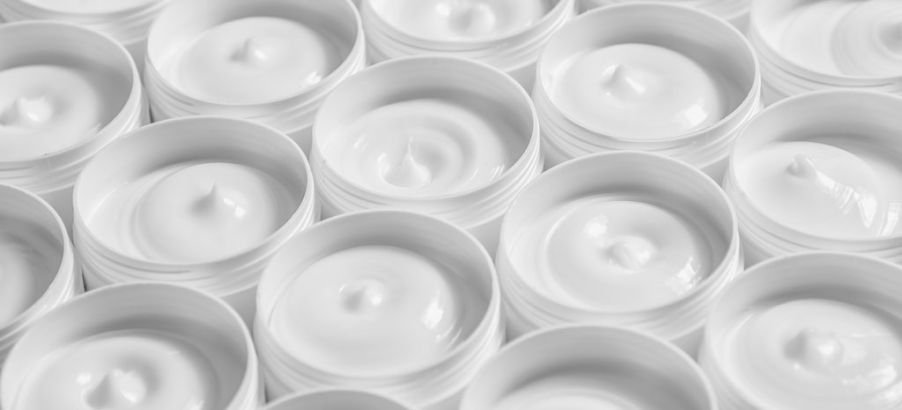Mercury is highly toxic: too much can cause irritability, depression, memory problems, and other neurological effects. While mercury poisoning is often linked to eating seafood, dangerous mercury levels have also been found in some cosmetics and skin care products.
The United States Food and Drug Administration (FDA) regulates that the legal limit on mercury in cosmetics is no more than 1 part per million (ppm). Yet, cosmetics are not regulated in all parts of the world.
This poses a risk: mercury-containing cosmetics manufactured abroad can be purchased during travel or ordered through online retailers. Clean beauty products, which are made without any known or potentially toxic ingredients, are becoming popular but aren’t well regulated globally.
To help make peoples’ lives safer and healthier, we worked with various government regulatory departments around the world to identify the element mercury (Hg) in cosmetics using our portable X-ray fluorescence (XRF) analyzers.
In this post, we share ways to identify mercury in cosmetics using XRF and other techniques.
Why Is Mercury Found in Some Cosmetics and Skin Care Products?
Mercury can act as bleaching agent, so it may be present in skin-lightening or anti-aging products that promise to remove blemishes, wrinkles, freckles, or age spots.
Mercury is also an inexpensive ingredient and has some preservative properties to lengthen a product’s shelf life. While mercury-containing products are banned for sale in the US, researchers have found some skin-lightening creams manufactured in other countries contain mercury levels as high as 210,000 ppm—far above the 1 ppm limit.
How to Identify Mercury in Cosmetics and Skin Care Products
If you suspect mercury is in a cosmetic, first check the label. According to the FDA, mercury could be listed as:
- Mercurous chloride
- Calomel
- Mercuric
- Mercurio
- Mercury
Other warning signs: the cosmetic doesn’t list the ingredients, lacks a product label, or has a non- English label with no English label available. US federal law requires that ingredients be listed on the label of any cosmetic or non-prescription drug.
To avoid potential health consequences, use caution if you suspect a cosmetic contains mercury. Here are a few tips to stay safe:
- Stop using the product immediately
- Thoroughly wash your hands and any other parts of your body that came in contact with the product
- Reach out to a health care professional who can provide advice on other ways to protect yourself
- Seal the product in a leak-proof container or plastic bag, then check with a local environmental agency on how to properly dispose of it
While these tips can help consumers avoid mercury-containing cosmetics, analytical techniques such as portable XRF can provide a definitive answer about mercury levels for government regulatory departments.
Detecting Mercury in Cosmetics: Comparing XRF and ICP-MS Techniques
Portable XRF analysis is an effective technique for measuring mercury levels in cosmetics since it is nondestructive and can quickly determine the presence of hazardous elements to ppm levels. The flexibility of our Vanta™ XRF analyzer’s user calibration is well suited for this application. The user can create their own custom calibration with a very small sample set, and the XRF instrument can apply the parameter to the potential concentration ranges.
An alternative technology for detecting mercury in cosmetic samples is inductively coupled plasma mass spectrometry, or ICP-MS. While highly accurate, this traditional elemental analysis technique for testing mercury can be expensive and take days to complete. ICP-MS instruments are also very sensitive. If the mercury levels are too high and injected into the ICP-MS, it will contaminate the tubes, torch, and other parts. Flushing out all the mercury from the system is time consuming.
Comparing the two techniques, portable XRF is the practical choice for mercury detection in cosmetics. It is rugged, affordable, and fast—without sacrificing accuracy. However, the two tools are sometimes used in tandem to confirm mercury levels.
Example: Screening for Mercury in Cosmetics Using Portable XRF
As an example, one regulatory department uses our Vanta handheld XRF analyzer as a screening tool to check mercury concentrations in cosmetics. The instrument helps the department determine the rough dilution factor required to not overload the ICP-MS with a high concentration of mercury. In this case, the dilution factor is the amount of material needed to reduce the concentration of mercury to a manageable level.
As mentioned earlier, the limit for mercury in cosmetics is very low (1 ppm). If the cosmetics supplier used more mercury than the limit, the product might contain more than 10–50 ppm. The Vanta VMR XRF analyzer can detect mercury as low as 2 ppm. As a result, the regulatory department uses the portable XRF device as a first check to determine whether the cosmetic has met the requirement. If further verification is required, they use their ICP-MS to confirm the results.
Related Content
Consumer Product Testing Using Vanta Handheld XRF
Brochure: Vanta Handheld XRF for Regulatory and Safety Screening
Screening for RoHS Substances with XRF
Get In Touch


.jpg?rev=6599)